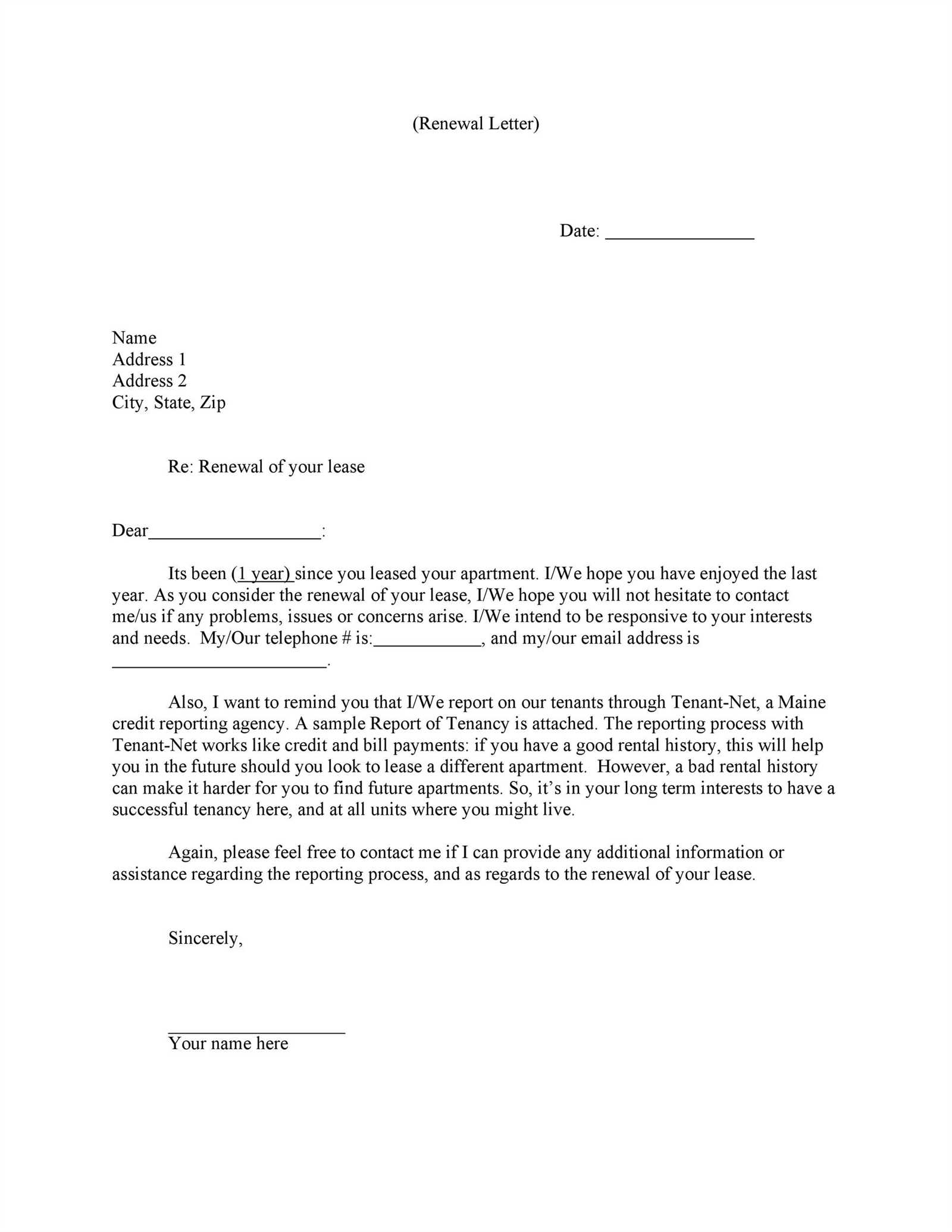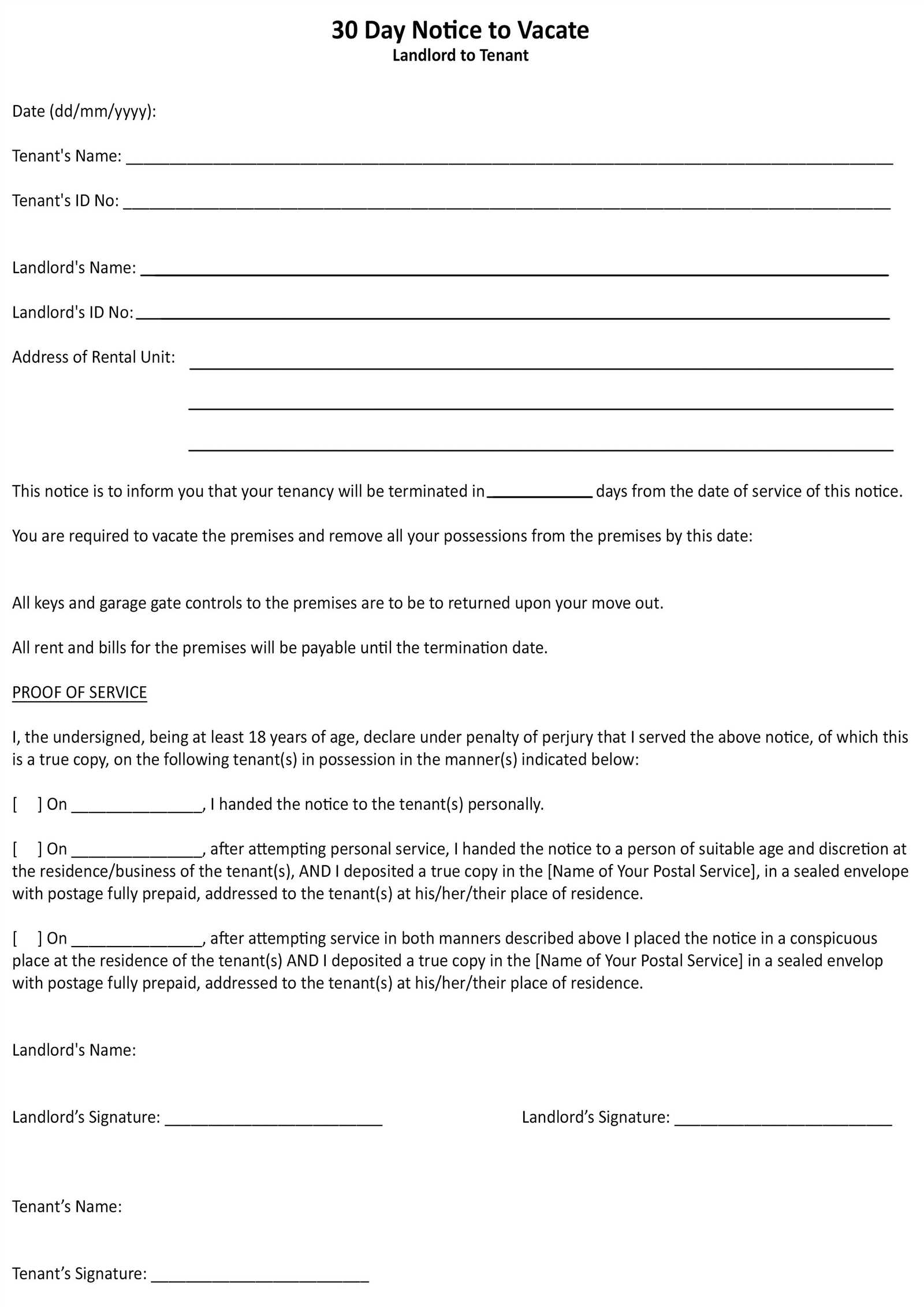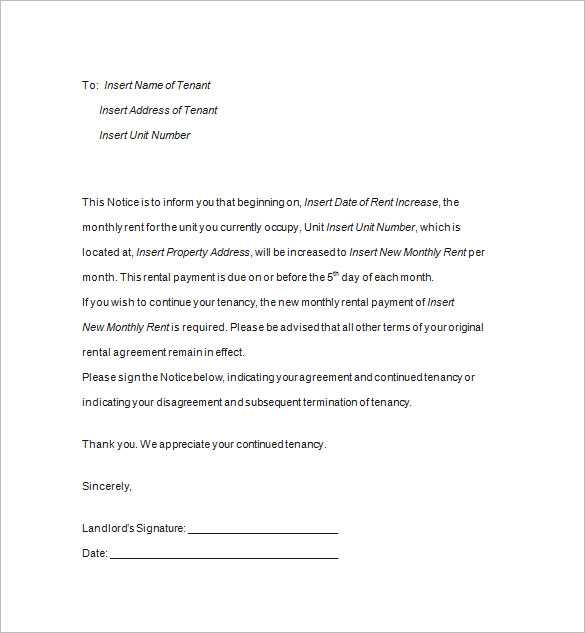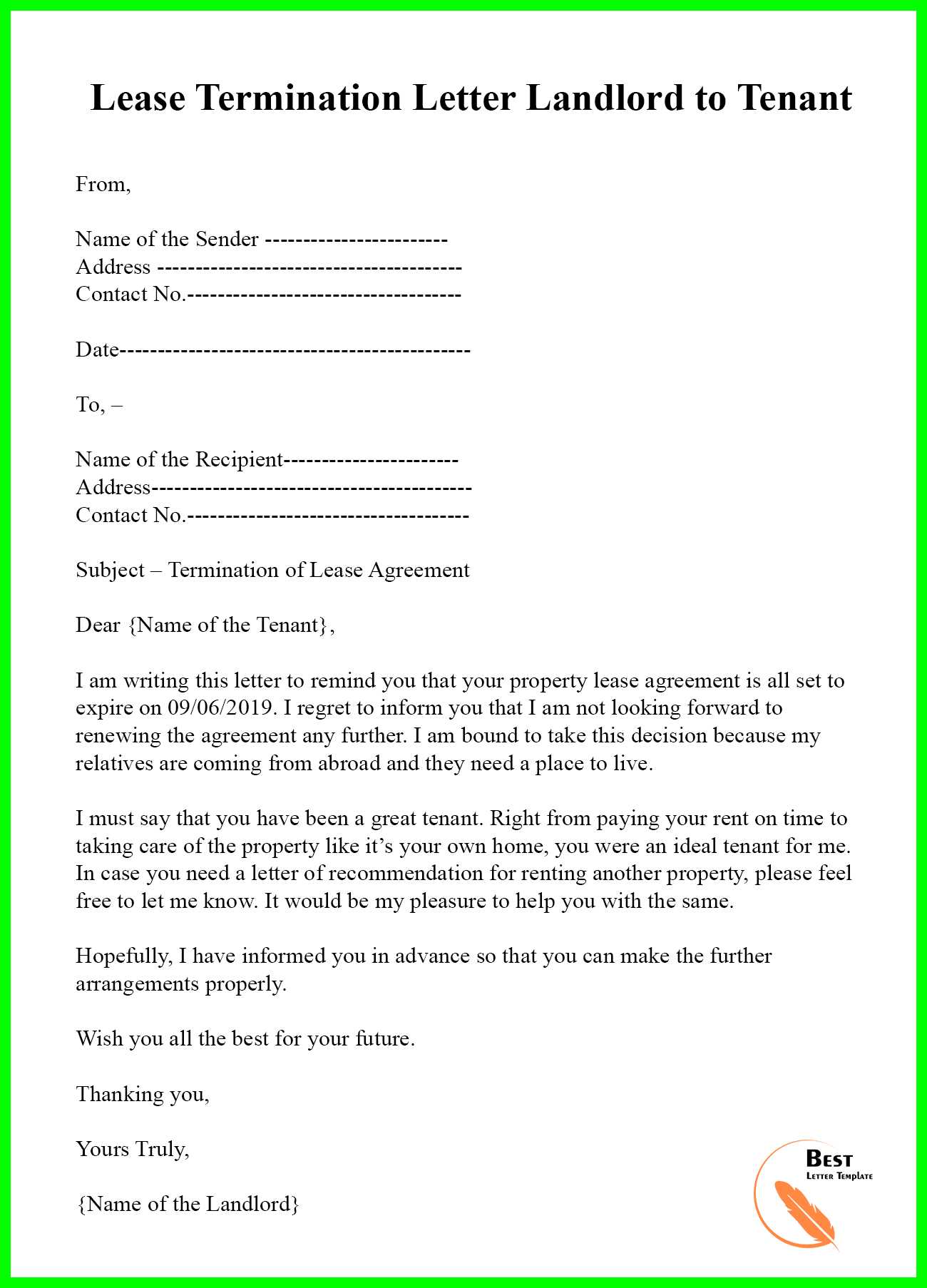End of Tenancy Letter Template for a Hassle Free Move Out

When it’s time to vacate a property, it’s important to communicate clearly with your landlord. This document serves as an official way to notify the property owner about your departure, ensuring that all terms are understood and agreed upon before you leave. Properly drafting this message helps avoid confusion and potential issues regarding the rental agreement.
Key Information to Include

To ensure that your notification is clear and complete, include the following essential details:
- Your name and address – This helps identify who is submitting the notice.
- Property address – Specify the address of the rental property you are vacating.
- Move-out date – Clearly state the date you plan to vacate the premises.
- Reason for leaving – While not always necessary, it’s often helpful to include a brief reason for your move.
- Contact details – Provide your phone number or email for any follow-up communications.
Be Clear and Concise
While it’s essential to include all the necessary information, the language used should be straightforward. Avoid long explanations or emotional statements. Simply state your intent to vacate the property and any relevant dates. This ensures that the landlord has everything needed to process your departure.
When to Send the Notification
It’s crucial to give sufficient notice before moving out. The typical notice period is often specified in the lease agreement, but it’s usually around 30 days. Make sure to send your document well in advance to avoid complications, as some contracts may impose penalties for late notifications.
Final Tips

- Check the lease terms – Review your rental agreement for any specific instructions regarding the move-out notice.
- Stay professional – Even if you’re leaving due to issues with the property, it’s best to maintain professionalism in your message.
- Follow up – If you don’t hear back within a reasonable time frame, it’s a good idea to follow up with your landlord.
Why You Need a Formal Move Out Notice

Notifying your landlord or property manager of your intention to vacate the premises is a crucial step in completing a rental agreement. This communication helps ensure that both parties are clear on the move-out terms and prevents any potential misunderstandings or disputes. A well-crafted document ensures that the process is smooth and efficient, protecting both you and the property owner.
Key Elements to Include
To make sure your message is comprehensive, include the following components:
- Personal details: Include your full name and current address to identify yourself clearly.
- Property information: Specify the address of the property you are vacating to avoid any confusion.
- Vacancy date: Clearly state the day you plan to move out, as it helps set expectations for both parties.
- Reason for departure: While optional, providing a brief explanation can help maintain a positive relationship with the landlord.
- Contact details: Ensure your phone number or email address is listed for any follow-up inquiries.
Common Mistakes to Avoid
While drafting your notice, keep in mind some common pitfalls:
- Ambiguity: Be specific about your move-out date and any other relevant details to avoid confusion.
- Emotional language: Stick to a formal tone and avoid unnecessary personal commentary or grievances.
- Missed deadlines: Ensure you send the notification within the required time frame, as specified in your lease agreement.
By following these steps and ensuring your communication is clear, professional, and timely, you can ensure a smooth transition for both you and your landlord.